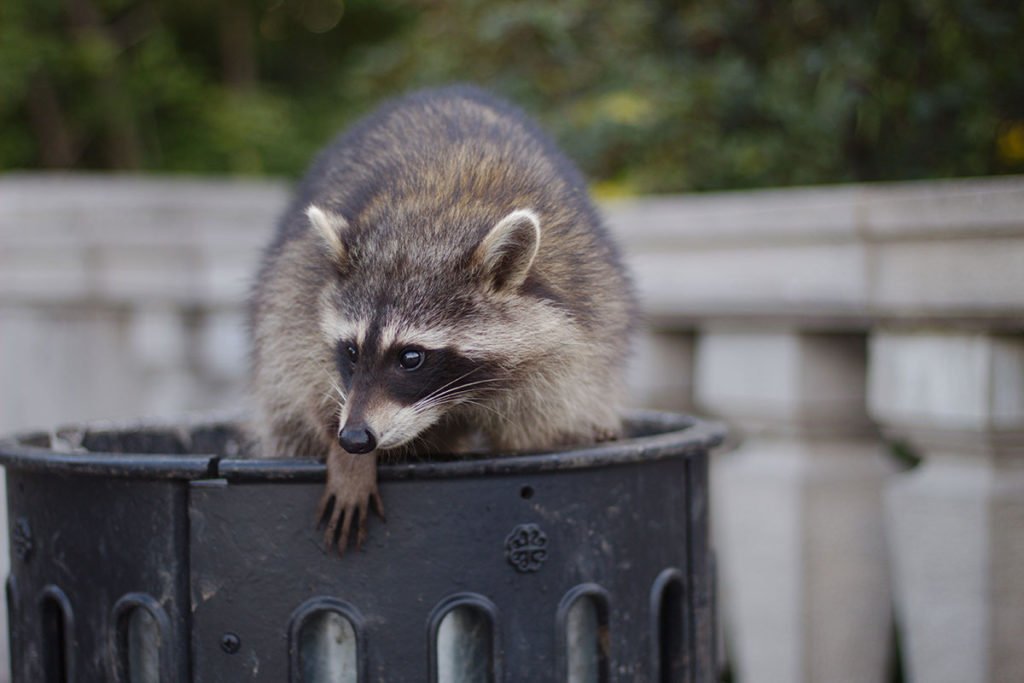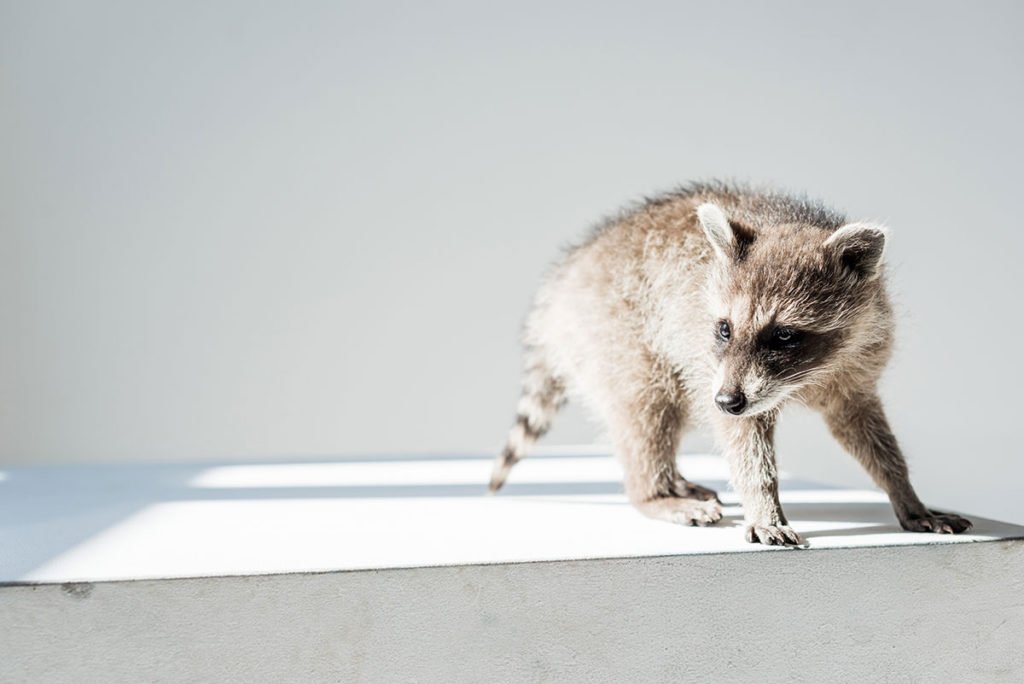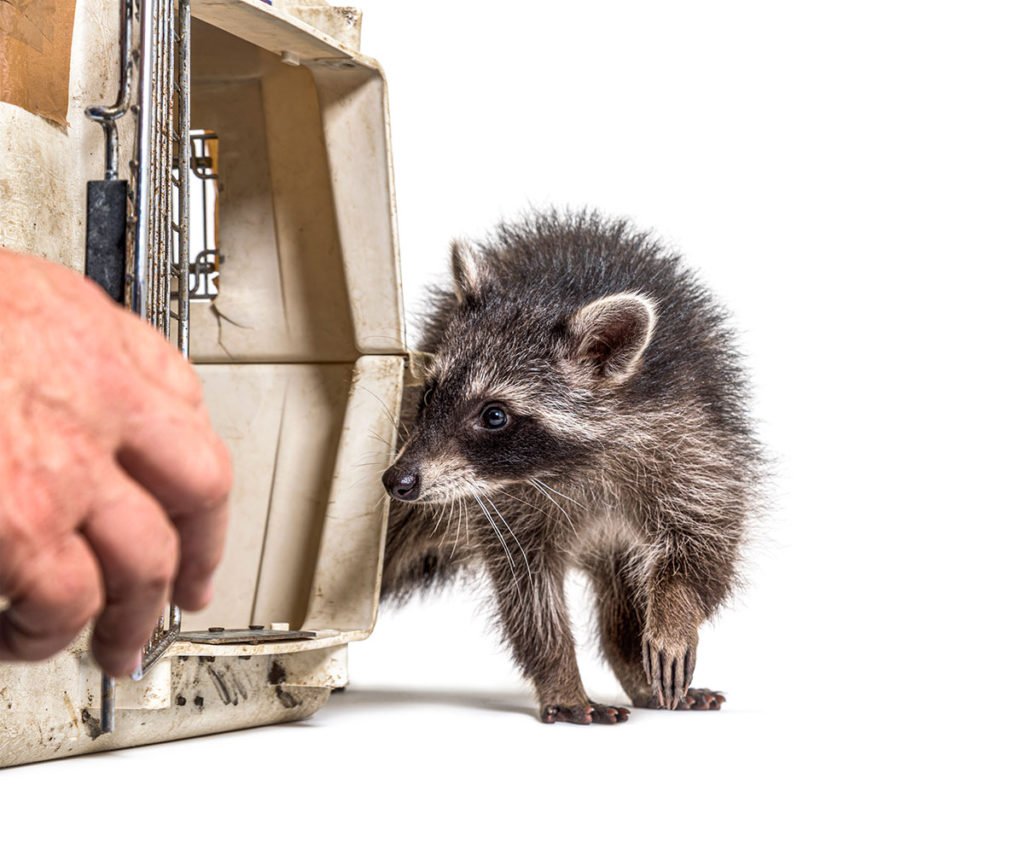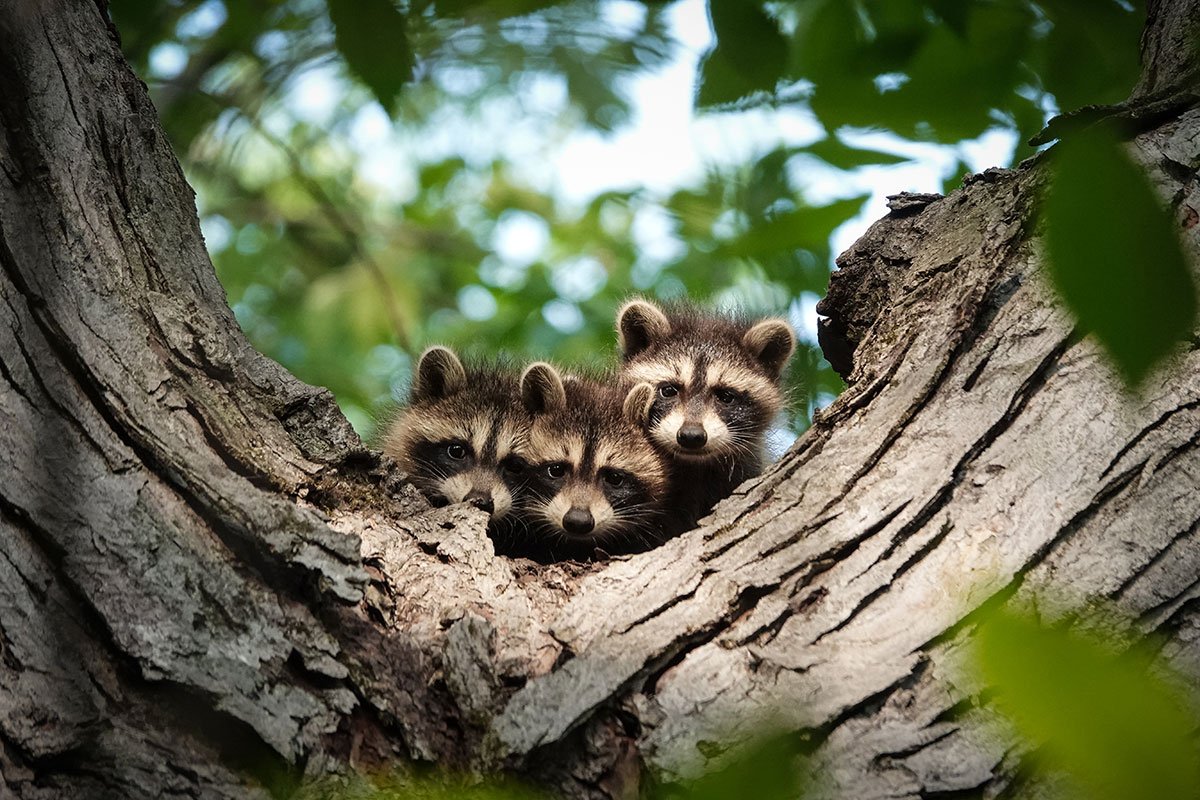This blog is dedicated to providing information on juvenile raccoons and their activities in suburban areas. These young raccoons, known for their curiosity and resourcefulness, often venture into residential spaces in search of food and shelter. Signs of their presence include overturned trash cans, scattered debris, and animal tracks. Juvenile raccoons are adept at navigating human habitats. Read on to learn more about baby raccoons and their interactions with the urban environment.
As you go about your day, keep an eye out for signs of juvenile raccoons in your area. These young raccoons can be curious and may leave behind subtle clues as they explore. Look for rustling in bushes and small paw prints near your trash cans, indicating their presence nearby. Stay observant to witness their playful antics and learn more about their behaviour.
By understanding these creatures, you can coexist harmoniously with them in your community. Take the time to notice these charming troublemakers and appreciate their role in your environment.
The Life Cycle of Juvenile Raccoons
In the life cycle of juvenile raccoons, also known as kits or cubs, there’s a crucial stage that’s essential for their development and survival. When they’re born, these young raccoons are blind and deaf, and they rely entirely on their mothers for food and protection.
As they grow, their mothers teach them important skills such as finding food, climbing trees, and avoiding predators. Typically, juvenile raccoons stay with their mothers for about a year before setting out to establish their own territories. This period is vital for the young raccoons to learn survival skills and social behaviours needed to thrive in the wild.
Understanding this phase in a juvenile raccoon’s life cycle is key to appreciating their resilience and adaptability in nature.
Raccoons Produce Babies in the Spring
When it comes to raccoon behaviour and biology, knowing when raccoons typically have babies is essential. Raccoons usually give birth in early spring, with a peak in April and May. This timing allows the young to mature during the summer months, when food is abundant.
Female raccoons seek out safe and sheltered locations to raise their kits, often choosing attics or crawl spaces in homes. Understanding the birthing season can help you be vigilant for signs of raccoon activity, such as increased noise or presence around your property.
Being aware of when raccoons have babies can aid in taking timely preventive measures to avoid potential infestations.
Baby Raccoons Are Dependent on Their Mothers
If baby raccoons are separated from their mother, they can typically survive for about 2-3 days before needing intervention for their care and well-being because they are reliant on their mother for warmth, protection, and nourishment. Without her, they become vulnerable to predators and starvation.
Acting swiftly is crucial if you come across orphaned baby raccoons to ensure their survival. Seeking assistance from wildlife rescue organizations or animal control services is recommended to provide the necessary care these young raccoons need. Remember, timely intervention is key to increasing their chances of thriving without their mother’s presence.
If you encounter such a situation, reach out for help promptly to safeguard these helpless creatures.
Raccoons Hide Their Babies as a Form of Protection
Raccoons naturally hide their babies in safe locations to protect them from potential dangers. Female raccoons carefully choose spots like dens, tree cavities, or other sheltered areas to keep their offspring secure. These hiding spots shield the young raccoons from predators and harsh weather conditions.
The mother raccoon will relocate her babies if she senses any threats. Remember, disturbing these hiding spots can stress the mother raccoon and may lead to the abandonment of the babies. If you suspect baby raccoons nearby, it’s best to leave them undisturbed and seek help from wildlife experts.

It Takes Several Months to Raise a Raccoon
To understand how long young raccoons stay with their mother, it’s important to know about their dependency period. Baby raccoons, or kits, typically spend 8-10 months with their mother. During this time, the mother teaches them crucial survival skills like finding food and staying safe from predators.
As the kits grow, they become more independent and eventually leave their mother to establish their own territories. Knowing this timeline helps recognize when young raccoons may start exploring areas near human habitats. Being aware of this natural process can help you identify signs of juvenile raccoons nearby.
Your Attic Is the Perfect Place to Raise a Family of Raccoons
Your attic provides an ideal environment for raccoons to raise their young. Its secluded and sheltered nature offers protection and security for mother raccoons to nurture their babies away from predators.
Raccoons are resourceful animals and often choose attics as a safe haven to give birth and care for their offspring. The insulation and clutter in attics mimic natural den environments, making them attractive nesting spots for raccoons.
If you notice signs of raccoon activity in your attic, such as scratching noises or droppings, there’s a high likelihood that a raccoon family has made itself at home. Promptly addressing this situation is crucial to preventing any damage or health risks associated with raccoons in your attic.
Removing Raccoons from an Attic
When removing raccoons from an attic, start by inspecting the area thoroughly to find entry points and assess the infestation level. Look for signs like droppings, torn insulation, and tracks.
Once you’ve identified these, contact a wildlife control expert who can safely and effectively handle raccoon removal. These professionals will use proven removal methods to ensure the safety of both the raccoons and the homeowners. It’s important to steer clear of contact with the animals or their feces, as they carry diseases that can be harmful to humans.
They’ll also seal off entry points to prevent re-entry and provide a detailed cleaning service after removal. By relying on experts, you can be confident that the raccoons will be relocated safely and that your attic will be free from future intrusions.

Why DIY Measures Don’t Work for Raccoon Removal
When it comes to dealing with raccoons on your property, trying do-it-yourself methods can often lead to ineffective results and potential risks. Raccoons are smart animals, which makes using DIY approaches like traps or deterrents less successful.
Some of the more popular DIY methods include the following:
- To prevent issues with raccoons, it is important to avoid intentionally feeding them. This can be done by refraining from feeding pets outside and promptly picking up fallen fruit. If outdoor feeding of pets is necessary, ensure to remove any leftover food once they have finished eating. Additionally, investing in wildlife-proof trash cans or securing lids with bungee cords can help deter raccoons from scavenging for food.
- Another way to mitigate raccoon encounters is by managing bird feeders. This can involve removing them at night, hanging them from clotheslines, using bird feeder raccoon guards, or opting for seeding and fruiting native plants instead of feeders. Various deterrents, such as hot sauce, motion-activated lights, sprinklers, and radios, can also be utilized to scare raccoons away from your property.
- For specific areas like raised vegetable beds or backyard ponds, consider implementing single-strand electric wire or exclusion fencing to protect them from raccoons. It is important to ensure that these measures are child-safe if there are children present. Furthermore, covering attic and crawl space gaps, installing chimney caps, and using lockable or smart pet doors can help prevent raccoons from gaining access to indoor spaces.
- To safeguard pets, keep rabbits and cats indoors, use lockable or smart pet doors, and ensure that dogs do not roam unsupervised while keeping their vaccinations up to date. By following these strategies, you can effectively deter raccoons and minimize potential conflicts with wildlife.
While these methods may be somewhat successful, they don’t provide a permanent solution. Only service from an experienced professional will produce the desired results. In many cases, the service is guaranteed. If the animals return, simply contact them for an additional visit to resolve the problem.
As well-meaning as you may be, there are risks involved. Without the right expertise, you might unintentionally harm the raccoons or miss some of the entry points, allowing for future infestations. Handling raccoons without the proper knowledge could also expose you to diseases they may carry, such as rabies or roundworm.
Locating Raccoon Babies
To locate raccoon babies, carefully observe for any signs of movement or sounds coming from potential nesting areas in and around your property. Raccoon babies are often found in secluded spots like attics, crawl spaces, or hollow trees.
Listen for high-pitched chirping or chittering noises, which are common vocalizations of young raccoons. Look for disturbed insulation, droppings, or nesting materials indicative of their presence. Kits may also peek out of openings or roam near their den under the watchful eye of their mother.
Exercise caution and avoid handling the babies directly, as the mother raccoon can be protective and may pose a threat if she feels her young are in danger.

Why Raccoon Babies Require Removal by Trained Professionals
Upon discovering raccoon babies on your property, it’s essential to grasp the importance of professional removal for ensuring the well-being of both the animals and your household.
Raccoon babies necessitate professional removal for various reasons. Wildlife control experts possess the required tools and expertise to safely manage and relocate the young raccoons without causing harm. Trying to remove them independently can be risky and may result in injuries or stress for the animals.
Professional removal also guarantees that the babies are relocated to a suitable habitat where they can thrive without posing a threat to your property or family. By relying on professionals for their removal, you’re safeguarding the welfare of both the raccoons and your household.
How to Get Rid of Baby Raccoons
When removing baby raccoons from your property, it’s best to seek assistance from professional wildlife control experts. These professionals have the necessary skills and tools to handle the situation safely and effectively.
By opting for professional removal, you ensure the well-being of both the raccoons and your property. Experts will carry out the process with precision and care, minimizing any risks or damage. Additionally, they’re well-versed in local laws and regulations regarding wildlife removal and relocation, ensuring compliance throughout the process.
Trusting experienced professionals for the removal of baby raccoons guarantees a successful outcome while maintaining a safe environment for both yourself and the animals.
Wildlife Pro’s Raccoon Control, Removal, and Exclusion Services
Our team of wildlife removal experts is dedicated to delivering professional and effective solutions for nuisance wildlife issues. With our extensive knowledge of raccoon behaviour, we specialize in developing exclusion plans to prevent future infestations. Committed to preserving a safe and healthy local ecosystem, we conduct our services with the utmost care.
Benefit from the expertise of our experienced professionals, who focus on providing tailored solutions for raccoon removal and prevention. Our team is dedicated to ensuring your home is free from unwanted animal pests while safeguarding the local ecosystem. Count on us to deliver high-quality service and support throughout the process, ensuring a quick and safe resolution to your wildlife concerns. Reach out to us today to learn more about our services.

